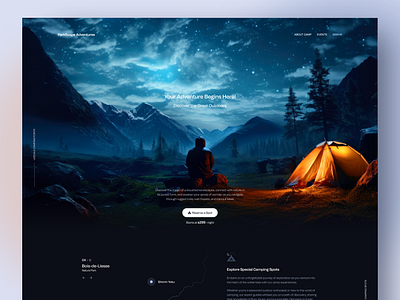Innovative Internet Layout Solutions for Modern and Engaging Sites
In the world of internet layout, the search of contemporary and interesting options has actually come to be significantly crucial for services intending to capture individual interest. By integrating vibrant shade schemes, interactive aspects, and receptive designs, developers can create experiences that not just resonate with customers but also improve brand name identification.
Embracing Bold Color Design
In web style, the critical use of strong color pattern can significantly improve customer involvement and brand name identity. By utilizing vivid hues, designers can produce visually striking websites that catch focus and promote an unforgettable experience. A well-chosen shade combination not just reflects a business's worths however additionally stimulates particular feelings that can affect user behavior.
Vibrant colors can be utilized to direct users' focus to key aspects such as telephone calls to activity, enhancing conversion prices. For circumstances, using contrasting colors for buttons and links can make these elements stand apart, prompting users to connect even more easily. Moreover, a natural shade plan throughout the site enhances brand recognition, developing a sense of knowledge and count on amongst site visitors.
However, it is critical to stabilize bold shades with ample white area to avoid overwhelming customers. Efficient usage of typography also matches vibrant shades, ensuring readability while preserving visual charm. Eventually, accepting bold color pattern in website design not just raises visual high quality yet also plays an important function in accomplishing calculated organization objectives, making it a vital factor to consider for contemporary web growth.

Utilizing Interactive Aspects
Interactive aspects are vital in modern-day website design, as they significantly boost individual engagement and develop a more dynamic browsing experience. By incorporating features such as computer animations, hover results, and clickable components, websites can encourage users to explore web content better and return for future visits.

Micro-interactions, such as subtle computer animations when a switch is clicked or a type is submitted, can additionally boost the individual experience by offering immediate comments. These tiny details can make the website really feel more responsive and to life, promoting a sense of link between customers and the site.
Additionally, gamification components, such as benefits for finishing details activities, can motivate customers to involve with the content much more deeply. By thoughtfully integrating these interactive parts, internet designers can develop an unforgettable and engaging online experience that resonates with individuals and motivates news them to return.
Applying Responsive Design
Applying receptive design is crucial in today's multi-device landscape, guaranteeing that web sites supply an ideal viewing experience throughout numerous screen dimensions. As customers significantly access the net via smart devices, tablets, and desktop computers, a one-size-fits-all technique is no longer sensible. Receptive layout permits seamless navigation and interaction, adjusting design and web content to fit the tool being utilized.
Secret concepts of responsive layout include liquid grids, versatile photos, and media inquiries. Liquid grids utilize relative systems, such as portions, as opposed to repaired pixels, making it possible for components to resize proportionately. Versatile images range within their consisting of aspects, preventing overflow and maintaining visual honesty. Media queries assist in the application of various designs based upon the device's attributes, such as size, height, or resolution, allowing developers to tailor the individual experience efficiently.
Moreover, responsive style improves SEO efficiency, as internet search engine favor mobile-friendly websites. By applying responsive design, organizations not just improve customer satisfaction and engagement yet likewise boost their reach in an affordable electronic landscape. As technology remains to progress, taking on receptive layout has actually ended up being a fundamental technique for any kind of modern-day and interesting website.
Incorporating Multimedia Content
Multimedia material plays a crucial function in creating engaging and dynamic internet experiences that catch users' attention and improve understanding. By integrating text, photos, audio, and video, internet sites can supply a richer narrative that interest various discovering styles and choices. This assimilation not just boosts user involvement yet also help in conveying complex ideas succinctly.
Integrating premium images and infographics can break up textual content, making it much more absorbable. Video clip tutorials and discussions can supply in-depth understandings that static content might not fully interact. Audio elements, such as podcasts or history songs, can additionally boost the ambience of a right here site, developing an extra immersive experience.
Furthermore, the tactical use multimedia can improve search engine optimization efficiency, as internet search engine prefer diverse content types, boosting exposure. It is important to make sure that multimedia components do not impede web page lots times, as this can lead to customer frustration. By stabilizing multimedia combination with efficiency factors to consider, internet developers can develop visually enticing and practical websites that resonate with customers, promoting a deeper link and motivating return check outs.
Prioritizing User Experience

To attain an optimal user experience, designers have to focus on a number of key concepts. Receptive style is essential; websites should adapt seamlessly to numerous gadgets and display sizes. This ease of access makes certain read what he said that customers can engage with material regardless of their chosen platform. Secondly, quality in design and pecking order is important. Clear telephone calls to activity, readable typography, and organized material overview customers, lowering cognitive tons.
Eventually, focusing on UX not just boosts user complete satisfaction however additionally drives interaction and conversion prices, making it an essential component of modern internet layout strategies. By placing individuals at the center of design efforts, internet sites can produce enduring, favorable impressions that motivate return visits.
Verdict
To conclude, modern-day internet design services that highlight bold color pattern, interactive aspects, responsive design, and multimedia content significantly enhance user engagement and complete satisfaction. Prioritizing customer experience through clear formats and constant responses better adds to boosted conversion prices. By embracing these approaches, websites can efficiently mesmerize visitors and reinforce brand name identification, eventually causing an extra vibrant and appealing online visibility. The assimilation of these layout principles is vital for achieving modern website design purposes.